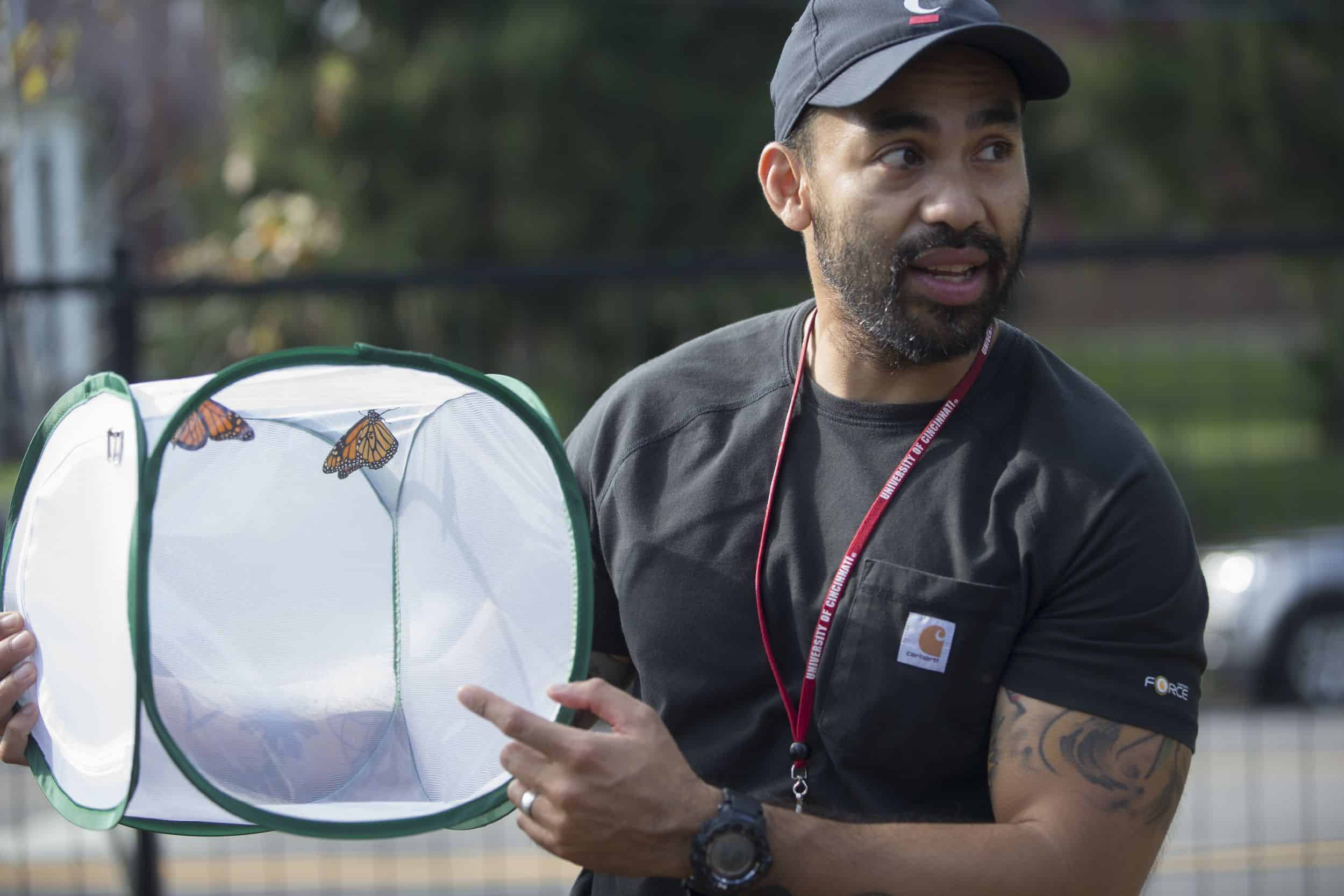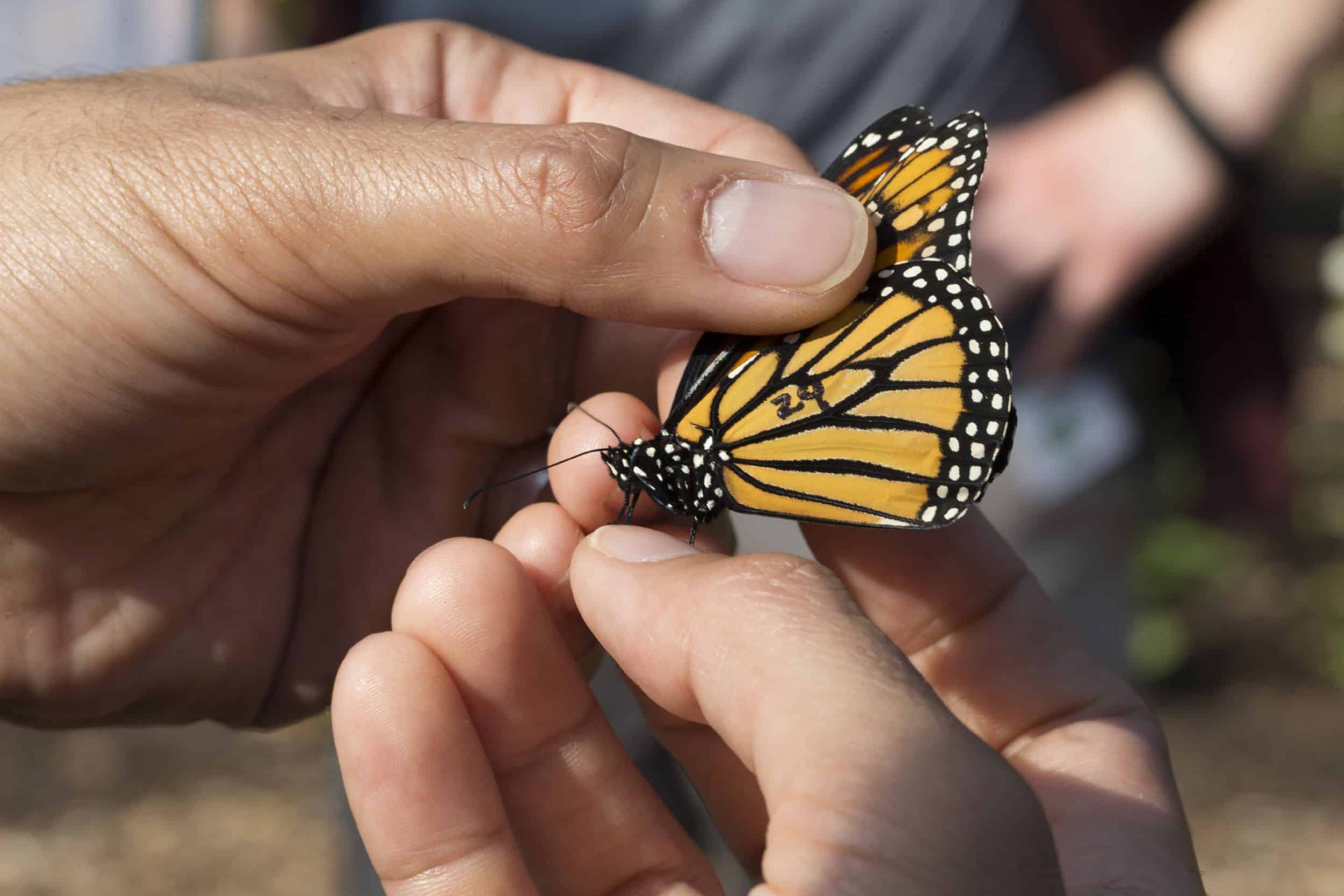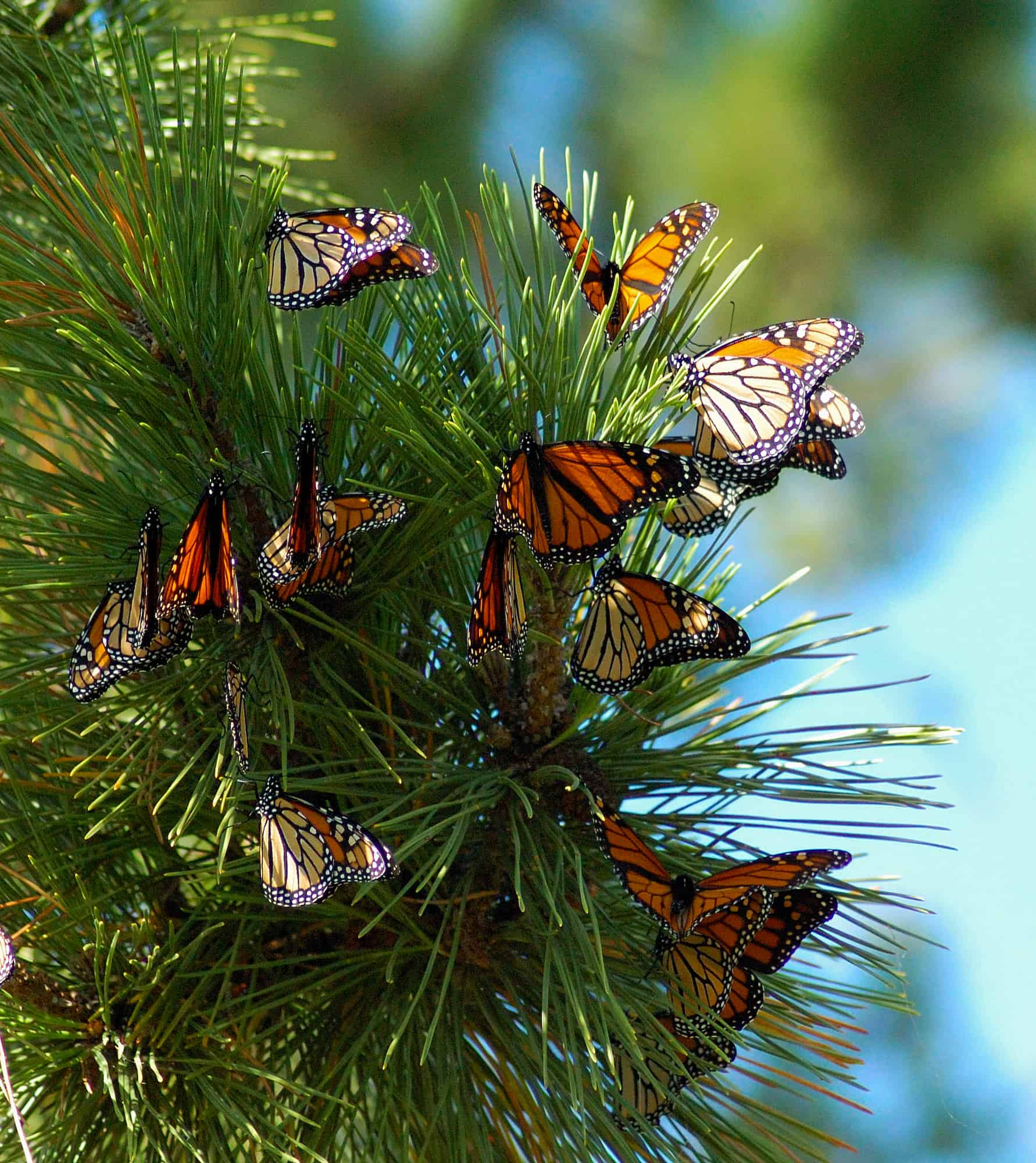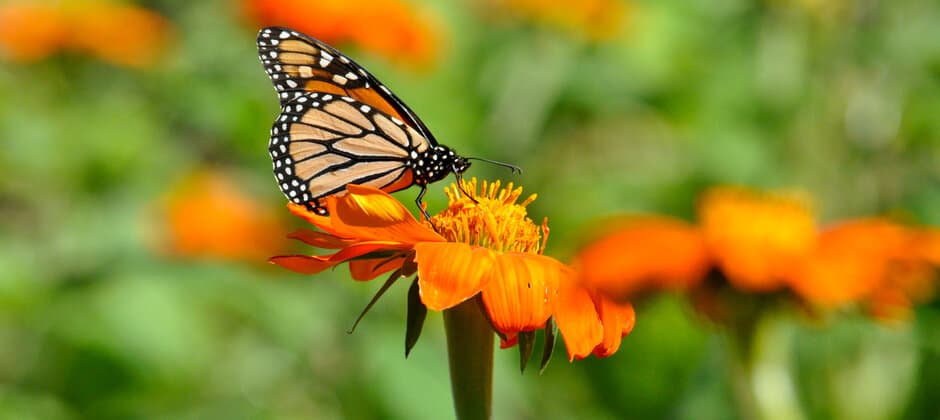Share this article
Light pollution can change monarch migration
Light pollution can affect monarch butterflies’ circadian clocks, possibly making it more difficult for them to rest at night and fly at the right time during their long migrations.
Plenty of research in the past has looked at how light pollution has impacted species’ migrations at night as they use the moon and stars, visual cues in the night sky, to help guide them during their journeys. Less has been done on how light pollution may interfere with species that migrate during the day, like monarch butterflies. But artificial light at night may affect them, too.
“What we know for monarchs, mammals and even people and plants, is that direct exposure to light at night can destroy normal circadian clock function and they can’t keep track of the time of day properly,” said Patrick Guerra, an assistant professor at the University of Cincinnati in the department of biological sciences.
Guerra was the senior author of a study published in iScience looking at how the butterflies react to artificial lights. Studying monarchs in the wild is difficult, and it’s especially difficult to tease apart the influences of light pollution when there are other factors like sound and weather around.

Patrick Guerra found that when butterflies are resting at night, light pollution can interfere with their internal compass. Credit: Lisa Ventre/UC Creative
To conduct the study, Guerra and his team used a flight simulator in a lab and shined a shop light, commonly found at the local hardware store, above them to determine what direction the monarchs would fly. “It’s like a flight treadmill,” he said. “They’re tethered in place in a stationary position and we study which direction they’re trying to fly.”
Monarchs primarily orient the direction they fly by using the sun as a celestial guidepost to travel south. They use the sun as a visual cue as it rises in the east, stays high up in the afternoon and sets in the west. “Monarchs know which way to point south when flying in the morning by keeping the sun to the left,” he said. In the afternoon, they keep the sun to their right. Their circadian clock keeps track of the time of day when the sun is out to help calibrate them to the local time. Anything interfering with that clock—like an artificial light—can confuse them.
When they conducted their experiment, the team first found that when tested during the day, the shop light was bright enough to motivate the butterflies to fly normally. Here, the shop light was the only light in the experimental room. More importantly, the monarchs treated the light as a visual cue to help them orient properly, just like how they use the sun outdoors. When the team shined the light in the morning or afternoon position, the butterflies functioned as if it were that time of day, even if it wasn’t.

Patrick Guerra studied how monarchs oriented themselves during a light experiment in a lab setting.
Credit: Lisa Ventre/ UC Creative
They repeated the experiment by testing the butterflies at night, a time when the butterflies are normally at rest and quiescent. They found that light exposure at night impacted the butterflies’ rest. “It’s like when you’re in bed at midnight and someone turns on the light,” he said.
A little after it gets dark, the butterflies think it’s nighttime and should be resting, the researchers found, but as soon as the light goes on, they behave as if it’s daytime during the same day. “If it’s still early enough in the cycle, they could be tricked to thinking it’s the same day,” he said. When they shine the light during the middle of the night, the butterflies treat it as if it’s the next day. This can mean that when a porch light or streetlight turns on in the middle of the night, they can become disoriented about what time of day it is.

Monarch butterflies often roost together at night when the temperature drops during their migration.
Credit: Michael Miller
That’s problematic because this reduces their time at rest, Guerra said. When they behave as if it’s daytime, they may start expending energy when they shouldn’t, since they have started the next day much earlier than normal. A disturbed resting cycle can result in adverse metabolic effects. In people, lack of sleep or a shift in normal circadian clock function, is connected to depression, higher cancer rates and metabolic disorders.
This is important, he said, as monarchs make long, multigenerational migrations from Canada all the way to Mexico, passing through a lot of cities with artificial light sources. This can cause an additional problem for monarch butterflies that are already facing declines and a number of threats from habitat loss and a changing climate. “This is just giving them one more brick to carry while they’re traveling along,” he said. “It’s hard to balance everything.”
Mitigation can be challenging, though. Eliminating highway lights, for example, may be impossible, he said, but it’s at least easy for people with pollinator gardens to keep them away from artificial light sources.
“It’s something to be mindful of,” he said.
Header Image: Light pollution can interfere with monarch butterflies’ internal compasses. Credit: Michael Miller








